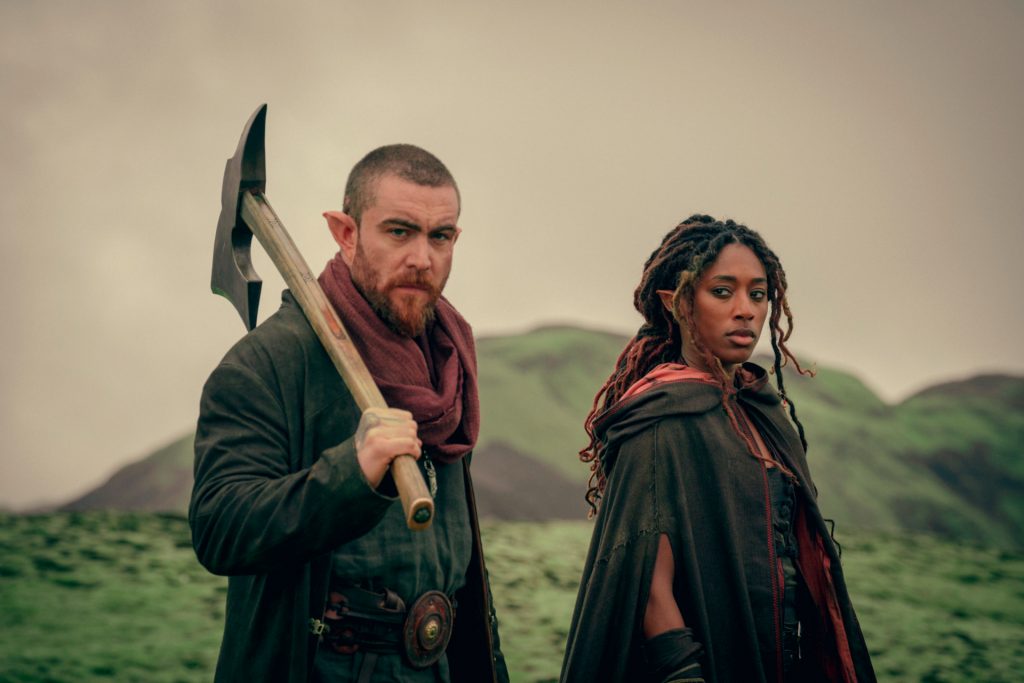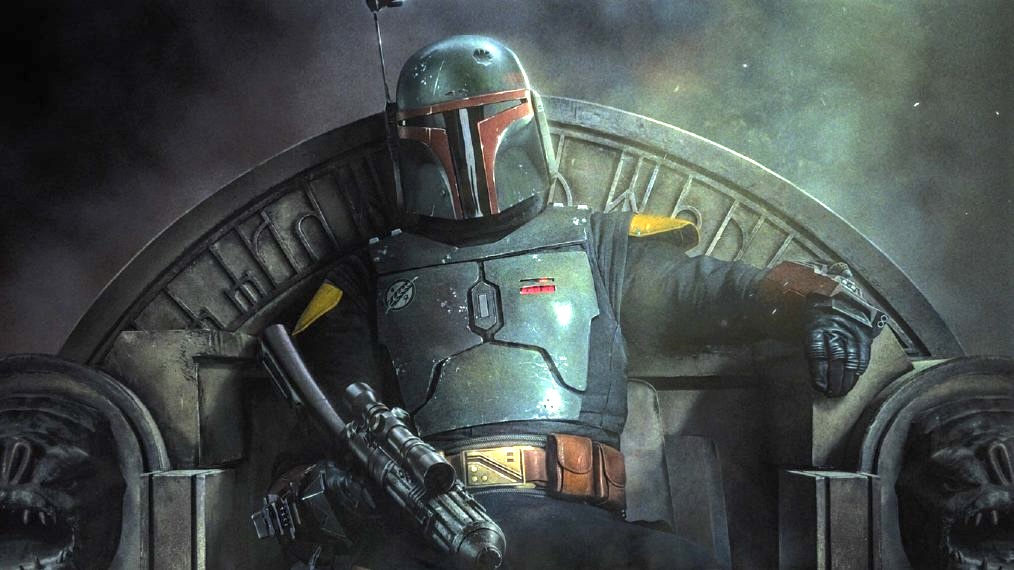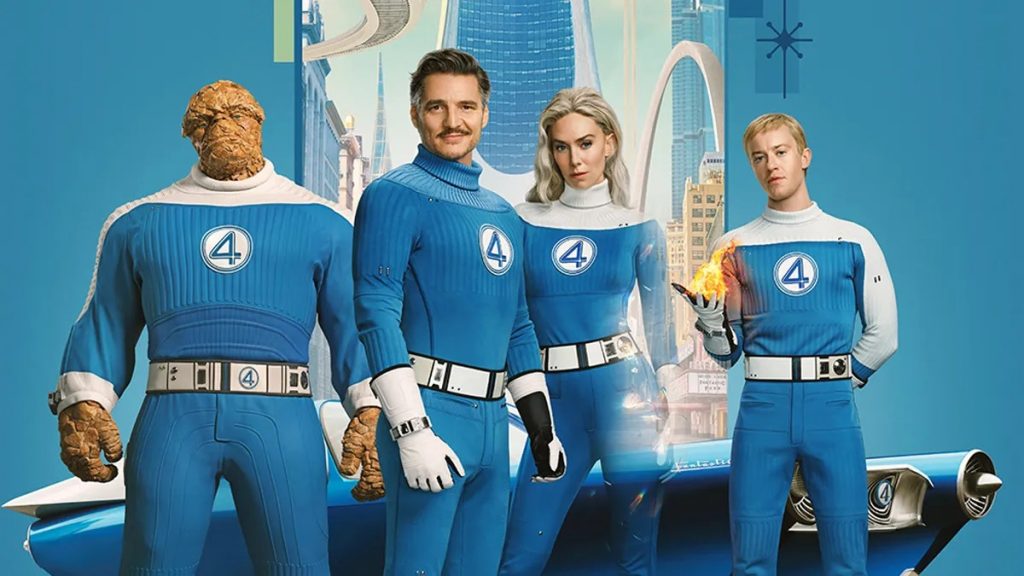How to Write a Film or Television Show, Build a Franchise, and Create Spinoffs, Worlds, and Universes

Writing a film or television show that evolves into a franchise is no small feat. Creating a compelling story and characters that engage audiences is just the start. For a TV show or movie to extend into a broader franchise, it requires a cohesive, expansive world and a universe with spinoffs and cross-platform potential.
Writers shouldn’t necessarily have an entire universe conceived of their story after completing a film or television script. Many spinoff ideas are born after the first movie or TV series has played. Franchises are built from characters or storylines that audiences responded to the most and want to see more of. In the case of television shows, spinoffs like Young Sheldon are often produced based on stories that the original show didn’t have time to explore.
This article will break down the steps involved in writing a film or television show, expanding it into a franchise, and how to create spinoffs and a universe.
1. Creating the Core Story
Every film or television show begins with a solid, engaging idea, and lore with a story engine that generates many stories. The core of your show should feel rich and layered with opportunities for organic branching out. For example, The TV series The Big Bang Theory starts with a simple conceit – the evolving relationships between a group of social awkward scientists and their socially aware neighbor. Think of it as Friends with Nerds. It ran for 12 successful seasons.
When writing for potential franchise creation, it’s important for writers to think about:
Characters: Strong, complex characters are often what audiences connect with most. These characters need to have depth, clear motivations, and arcs that evolve over time. A great example is Euphoria, which began as a television show centered around Zendaya’s character Rue, but has since opened the door for deeper exploration of other hedonistic teenage characters, such as Cassie, Jules and Nate, as spinoffs.
Setting: A unique, memorable setting is essential for world-building. The Last of Us, which started as a video game, successfully adapted its post-apocalyptic world for television. The show’s richly detailed setting has room for exploration of different locations, characters, and backstories, much like how The Mandalorian naturally grew out of the Star Wars universe.
Theme: Themes like heroism, morality, family, and survival tend to resonate widely with audiences. The Witcher universe, with its intricate themes of destiny, fate, and morality, lends itself perfectly to both television and video games, with spinoffs like The Witcher: Blood Origin and future projects in the works.

The Witcher: Blood Origin
2. Writing for Expansion: Crafting a Larger Universe
For a film or television show to become a franchise, it must possess characteristics that make it adaptable for further development. This includes creating elements that can be expanded upon in future stories, whether through direct sequels, prequels, or other related content. Stranger Things, for example, began as a simple horror/sci-fi series, but with its unique creatures, parallel dimensions, and distinct characters, it has set the stage for various spinoffs and media tie-ins.
Rich Lore and Mythology: A successful franchise often has an underlying mythology or lore that can be explored in greater depth. The Witcher universe, for example, has the novels, games, and an expanding TV series, with a spinoff series about the origins of the Witchers, Blood Origin. Similarly, House of the Dragon explored the history of the Game of Thrones world, giving fans a deeper dive into the Targaryen dynasty, with more spinoffs rumored to come.
Iconic Elements: Whether it’s a character, a weapon, or a specific event, having elements that resonate with audiences and can be used in spinoffs is crucial. The Stranger Things Demogorgon is a prime example, an iconic monster that has generated fan interest beyond the show itself, inspiring toys, comics, and spinoffs centered around the Upside Down.
Potential for Prequels and Sequel Arcs: Think about how your story could be revisited. Could there be a prequel? Could characters’ backstories be explored in greater depth, as in The Mandalorian, where we see the origins of Boba Fett in The Book of Boba Fett? These types of prequels and spinoffs help expand the universe while maintaining narrative cohesion and building out the audience base.

The Book of Boba Fett
3. Developing a Franchise Strategy
Once you’ve created the initial story, the next step is to start thinking about the franchise potential. Building a franchise is about turning your story into an ongoing, multi-platform experience. To do this, a cohesive franchise strategy is key.
Transmedia Storytelling: A franchise doesn’t exist solely in one medium. It expands across television, film, books, comics, video games, theme park rides, immersive experiences, and merchandise. The Witcher, originating as a book series, became a successful video game franchise and then a Netflix series, and now is expanding into further projects. Halo, originally a game, saw an adaptation into a Paramount+ series and continues to develop cross-platform storytelling.
Branding and Merchandising: A successful franchise capitalizes on its cultural niche by creating merchandise and marketing tie-ins. Marvel’s Avengers franchise, for example, generates billions not just through the films themselves, but with toys, collectibles, clothing, and even theme park attractions. Similarly, The Mandalorian introduced Baby Yoda (Grogu) to the world, and the character quickly became a merchandise sensation, driving the popularity of the series.
Planning for the Long-Term: Franchise success doesn’t happen overnight. It requires forward-thinking planning, as seen in the Marvel Cinematic Universe (MCU). The MCU began with Iron Man (2008) and, over time, established an interconnected series of 21 films, leading to Avengers: Endgame. The key to their success was their careful planning of characters, timelines, and relationships between the films.
Writers and creators didn’t just make standalone films—they set up stories that would later intersect, creating a long-term narrative arc. Similarly, DC comics have constucted a universe starting from Superman, Batman and Wonder Woman leading to The Fantastic Four.

The Fantastic Four: First Steps.
4. Creating Spinoffs and Expanding the Universe
Once your franchise is successful, you can start creating spinoffs, which allow you to expand your universe further. A spinoff focuses on a particular character or aspect of the universe that has potential for further exploration. This could be a prequel or a continuation of side characters’ stories.
Character-Based Spinoffs: The most common type of spinoff focuses on a beloved or interesting character. Better Call Saul, a spinoff of Breaking Bad, follows the story of Saul Goodman, a side character, and deepens the audience’s understanding of his background, motivations, and evolution. The show succeeds because it builds upon what’s established in Breaking Bad while introducing new ideas, themes, and characters. More recently, The Last of Us is already planning a multi-player spinoff.
World-Building Spinoffs: Sometimes, you don’t need a character to drive a spinoff. Instead, the universe or world itself is the central element. The Mandalorian spinoff, for example, takes place within the same Star Wars universe but focuses on a new character (Din Djarin) and a different narrative thread. The universe’s vastness and complexity give creators room to explore different stories and timelines. Additionally, the Star Wars universe continues to expand with projects like Ahsoka, Andor, and Rangers of the New Republic.
The Role of Crossovers: Crossovers between existing characters and universes can also breathe new life into a franchise. The MCU’s Avengers films are prime examples of how various character arcs can intersect into a larger narrative.
5. Conclusion
Writing a film or television show is the beginning of a long journey that can extend into a thriving franchise. To build a successful franchise, writers must think beyond the immediate story and consider how characters, settings, and themes can expand into a larger canvas. Using transmedia storytelling, creating rich lore and mythology, and planning long-term arcs are essential for franchise creation. Spinoffs, character-driven stories, and world-building will allow you to extend your narrative into new realms and reach a new tranche of viewers.
Join the Discussion!
Related Articles
Browse our Videos for Sale
[woocommerce_products_carousel_all_in_one template="compact.css" all_items="88" show_only="id" products="" ordering="random" categories="115" tags="" show_title="false" show_description="false" allow_shortcodes="false" show_price="false" show_category="false" show_tags="false" show_add_to_cart_button="false" show_more_button="false" show_more_items_button="false" show_featured_image="true" image_source="thumbnail" image_height="100" image_width="100" items_to_show_mobiles="3" items_to_show_tablets="6" items_to_show="6" slide_by="1" margin="0" loop="true" stop_on_hover="true" auto_play="true" auto_play_timeout="1200" auto_play_speed="1600" nav="false" nav_speed="800" dots="false" dots_speed="800" lazy_load="false" mouse_drag="true" mouse_wheel="true" touch_drag="true" easing="linear" auto_height="true"]










You must be logged in to post a comment Login